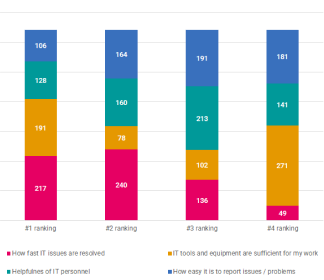Product validation can happen at various stages in a product development cycle. In a waterfall model, we may know it to be commonly placed at the end of development in the form of User Acceptance Testing. That practice, however, may pose a risk as issues discovered may be fundamental and require rollback that offset the project by several months.
Unlike multi-variate testing or heatmap, which focuses on evaluating which feature performs best quantitatively, product validation methods such as usability testing and heuristic analysis help you understand what the issues are and why.
If you have a new product, running usability testing at the product ideation and feature definition stages can help you evaluate whether the features you’re introducing have solved the user’s problems. Doing this exercise to confirm a product’s desirability prior to building it will save your team time, effort and cost.
For existing products, these tests are designed to identify pain points and friction along your user flow and the reason behind that snag in the user’s experience. When used well, it can greatly help product teams make informed decisions on improvements to be made to increase conversions or reduce user churn.
Let’s take a closer look at these two validation methods.
Usability testing
Usability testing involves observing a number of users as they interact with your product. These users are recruited based on the persona your product is designed for. Previously, usability testing measured metrics such as task success rate, the time a task requires, the error rate, and users’ subjective satisfaction. However, as the design gets increasingly embedded and practised in product teams, these testing sessions can also be used to answer critical product questions. Beyond the product’s intuitiveness, it can determine how well a product feature solves the user’s pain point.
Heuristic analysis
Heuristic analysis is a structured and systematic evaluation of a user interface against a set of recognised usability principles. This form of evaluation is often used on an existing digital product with usability issues that can be more objectively quantified. Issues such as inconsistency in UI components, lacking standards in design conventions, poor help documentation and low system status visibility are all common usability issues that affect most products afflicted by design debt.
The analysis is done by our team of UX designers and categorised based on each principle. Heuristic analysis is a good option when the product is proven to solve users’ problems but needs major improvement to be more accessible, user-friendly and intuitive.
Post-test
In both tests, we analyse the data, identify key findings, and deliver a comprehensive report of practical, actionable recommendations. Our team will document all issues identified and grade them based on severity, from cosmetic all the way to critical, where possible. These findings are then presented to the product team where a prioritisation exercise is then done based on user value, business value and business urgency.










